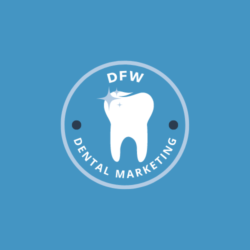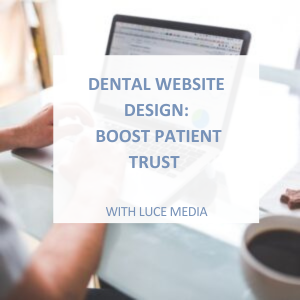
An effective online presence is indispensable for businesses across all sectors, including dental practices in the digital age. A well-designed website is a powerful tool that can help dental practices attract and retain patients, establish trust, and showcase their expertise. In this comprehensive guide, we will delve into the significance of website design for dental practices and provide tips on how to create a website that stands out in the competitive healthcare landscape.
Creating a Strong First Impression
The first impression is often the most lasting, and in the digital realm, your website is the face of your dental practice. It’s where potential patients get their first glimpse of your services, your team, and your professionalism.
The Impact of First Impressions
Your dental practice’s website is usually the first point of contact between your potential patients and your business. A visually appealing and well-organized website can leave a positive and lasting impression on visitors. It’s vital to understand the design elements that influence a visitor’s perception of your practice. These elements include:
- Colors: Choosing the right color scheme is essential. Calm, soothing colors are often preferred in dental websites to evoke a sense of trust and comfort.
- Fonts: Selecting readable and professional fonts is crucial. Avoid overly decorative fonts that may be difficult to read.
- Images: High-quality images of your clinic, staff, and satisfied patients can establish trust and credibility.
User-Friendly Navigation
An excellent dental practice website should be easy to navigate. Visitors should be able to find the information they need with clarity. Here are some key considerations for user-friendly navigation:
- Intuitive Menus: The menu structure should be straightforward and logical, making it easy for visitors to access essential information like services, about the practice, and contact details.
- Clear Call-to-Action Buttons: Encourage visitors to take the next step by including clear call-to-action buttons, such as “Schedule an Appointment” or “Contact Us.”
- Responsive Design: Your website should adapt to different screen sizes, ensuring that it looks and functions well on both desktop and mobile devices.
Building Trust and Credibility
Patients need to trust their healthcare providers. Your website plays a crucial role in building and maintaining that trust.
Professional Branding
Professional branding sets the tone for your practice. It includes elements such as:
- Logo: A professionally designed logo gives your practice a strong identity.
- Color Schemes: Consistent use of colors throughout your website and other branding materials helps establish brand recognition.
- Visual Identity: Maintain a cohesive visual identity across your website, social media profiles, and marketing materials.
Testimonials and Reviews
Patient testimonials and positive reviews are powerful tools for building trust with potential patients. Consider these tips:
- Showcase Reviews: Display reviews and testimonials prominently on your website, possibly on a dedicated page or integrated into service pages.
- Encourage Reviews: Ask satisfied patients to leave reviews on platforms like Google or Yelp. Make it easy for them by providing links and guidance.
Informative Content

Educational content is an excellent way to engage your audience and establish your practice as a trusted source of information.
Educational Resources
Offer educational resources related to oral health, procedures, and preventative care. Examples include:
- Blog Posts: Regularly publish blog posts covering topics like oral hygiene, dental procedures, and industry news.
- Video Content: Create informative videos that explain common dental procedures and share tips for maintaining oral health.
- Infographics and Guides: Visual content like infographics and downloadable guides can be informative and shareable.
Blogging and News Updates
Updating your website with fresh content can improve your search engine ranking and keep your patients engaged. Consider these tips:
- Develop a Content Calendar: Plan your content ahead of time to ensure a consistent posting schedule.
- Engage with Your Audience: Encourage comments, questions, and discussions on your blog posts to foster a sense of community.
Online Appointment Scheduling
Convenience is key in the modern world. Offering online appointment scheduling can significantly improve the patient experience.
The Convenience of Online Booking
Online appointment scheduling offers several benefits:
- 24/7 Availability: Patients can book appointments at any time, even outside of regular office hours.
- Reduced Administrative Work: It can streamline your practice’s operations, reducing the administrative burden of scheduling appointments over the phone.
Integrating Appointment Scheduling Tools
To implement online appointment scheduling, consider using third-party scheduling tools that integrate seamlessly with your website. These tools should be user-friendly for both patients and staff.
Search Engine Optimization (SEO)

SEO is a critical component of any successful website. It ensures that your website ranks well in search engine results and attracts organic traffic.
SEO for Dental Practices
To improve your website’s SEO, focus on:
- Keyword Research: Identify relevant keywords that potential patients might use in their searches.
- On-Page SEO: Optimize your website’s content, meta tags, and headings for these keywords.
- Local SEO: Optimize your website for local searches to attract patients in your immediate area.
Local SEO
Local SEO is particularly relevant for dental practices since most of your patients will come from the local community. To optimize for local SEO:
- Claim Your Google My Business Profile: Ensure your practice is listed and verified on Google My Business, providing essential information like your address, phone number, and office hours.
- Consistent NAP: Maintain consistent and accurate Name, Address, and Phone (NAP) information across all online directories and listings.
Mobile Responsivenes
Mobile devices account for a significant portion of website traffic, so it’s essential to ensure that your website is mobile-responsive.
The Mobile-First Approach
With an increasing number of users accessing websites via mobile devices, it’s crucial to adopt a mobile-first approach in web design. Key considerations include:
- Responsive Design: Ensure that your website adapts to various screen sizes and resolutions.
- Mobile Usability: Test your website’s mobile usability, focusing on navigation, load times, and content display.
ADA Compliance
Accessibility is a legal and ethical requirement for websites. Ensuring your website is accessible to all users, including those with disabilities, is crucial.
Accessibility for All
Key steps to make your website ADA-compliant include:
- Alternative Text for Images: Provide descriptive alt text for all images to assist users with visual impairments.
- Keyboard Navigation: Ensure that all interactive elements on your website can be navigated and operated using a keyboard.
Measuring Success
To evaluate the effectiveness of your website design and marketing efforts, you need to monitor your website’s performance.
Analytics and Key Performance Indicators (KPIs)
Consider using tools like Google Analytics and heatmaps to track user behavior and monitor KPIs such as:
- Website Traffic: Measure the number of visitors, pageviews, and bounce rates.
- Conversion Rates: Track the number of appointments scheduled or contact forms submitted.
- Click-Through Rates (CTR): Analyze the effectiveness of call-to-action buttons and links.
Choosing a Web Design Partner
The decision to handle web design in-house or outsource it to a professional agency is a critical one.
In-House vs. Outsourcing
Consider the pros and cons of both approaches:
In-House:
- Full control over the design and development process.
- Potential cost savings for smaller projects.
Outsourcing:
- Access to a team of experienced professionals.
- Faster project completion.
- Ongoing support and maintenance options.
Maintenance and Ongoing Updates
A website is not a one-and-done project. It requires ongoing maintenance and updates to remain effective.
Keeping Your Website Fresh
To keep your website up to date:
- Regularly Review and Update Content: Ensure that all information on your website, including service details, staff profiles, and contact information, is accurate and current.
- Security Updates: Regularly update your website’s content management system (CMS) and plugins to protect against security vulnerabilities.
- Monitor User Feedback: Listen to user feedback and make necessary improvements based on user comments and suggestions.

Conclusion
In the modern healthcare landscape, a well-designed website is a critical asset for dental practices. It serves as a digital storefront, information hub, and appointment scheduler, all while building trust and credibility with potential patients. By following the tips and strategies outlined in this guide, you can create a website that not only meets your practice’s needs but also leaves a lasting impression on your target audience. Your dental practice’s website can be a powerful tool in growing your patient base and enhancing the overall patient experience. Make it count! Contact us today!

